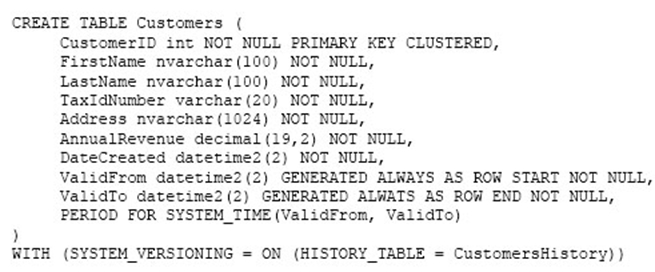

Note: This question is part of a series of questions that use the same or similar answer choices. An answer choice may be correct for more than one question in the series. Each question is independent of the other questions in this series. Information and details provided in a question apply only to that question.
You create a table by running the following Transact-SQL statement:
You are developing a report that aggregates customer data only for the year 2014. The report requires that the data be denormalized.
You need to return the data for the report.
Which Transact-SQL statement should you run?
A.
B.
C.
D.
E.
F.
G.
H.
Tr4ckz
Highly Voted 5 years, 8 months agoIlray
5 years agod_m
4 years, 9 months agolh2607
4 years, 6 months agolh2607
4 years, 6 months agoPrides
Highly Voted 5 years, 4 months agoVermonster
Most Recent 4 years, 5 months agoVermonster
4 years, 5 months agoAndy7622
4 years, 6 months agoAndy7622
4 years, 6 months agozeinaa
4 years, 9 months agoTheDUdeu
4 years, 11 months agoloceweh520
5 years, 2 months agoBabyBee
4 years, 7 months agododor
5 years, 3 months agolh2607
4 years, 6 months agoAndybug
5 years, 4 months agoDacPV
5 years, 3 months agoBillybob0604
4 years, 5 months ago